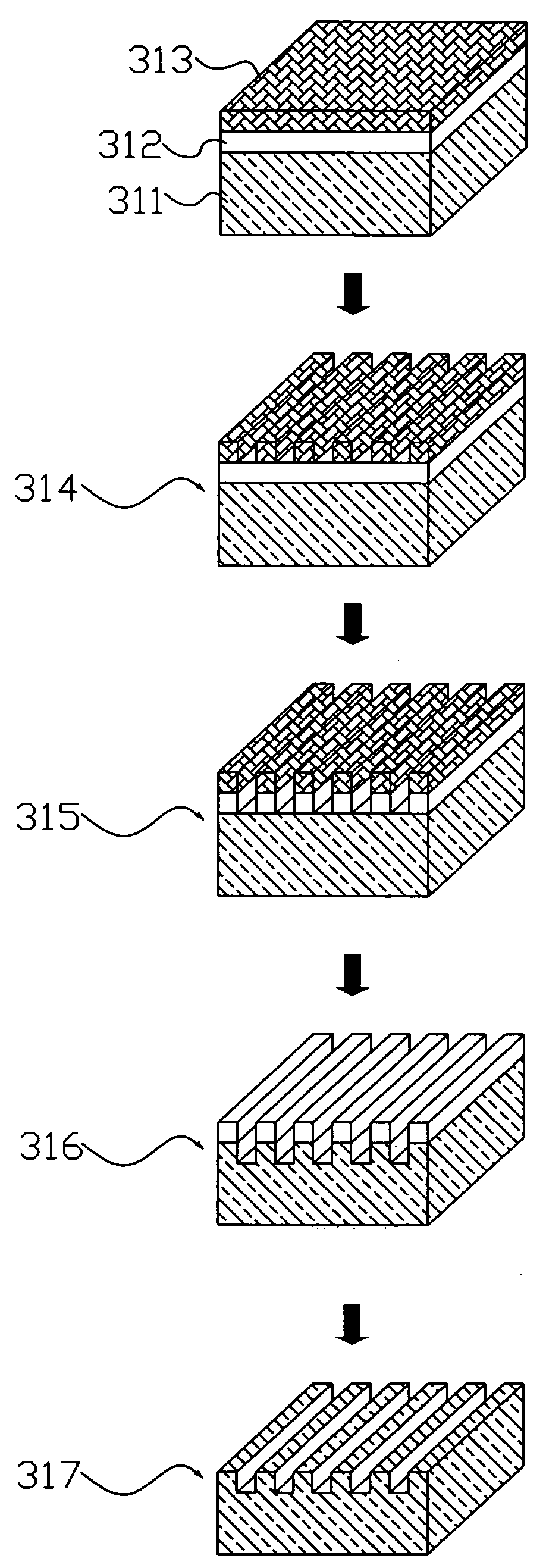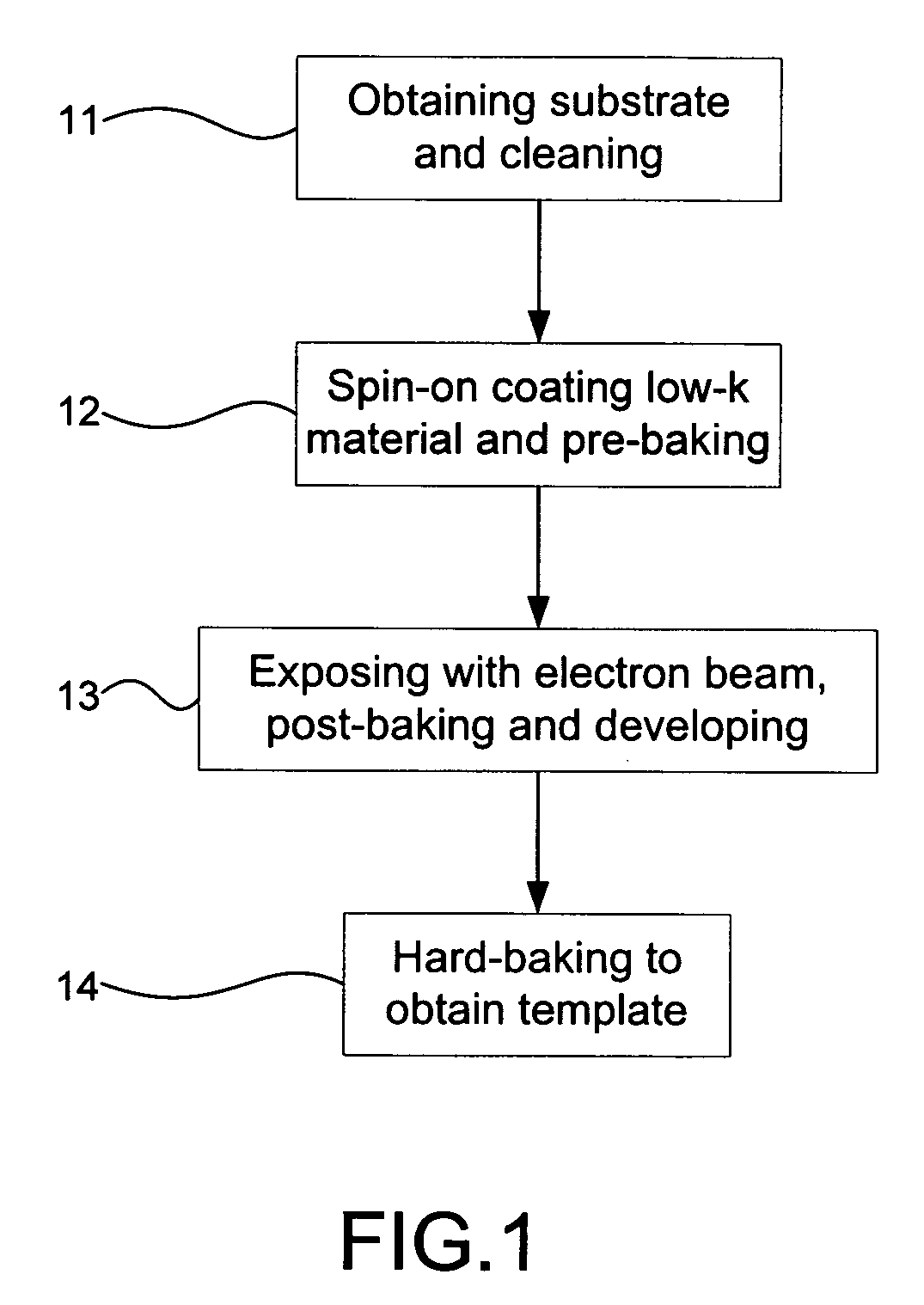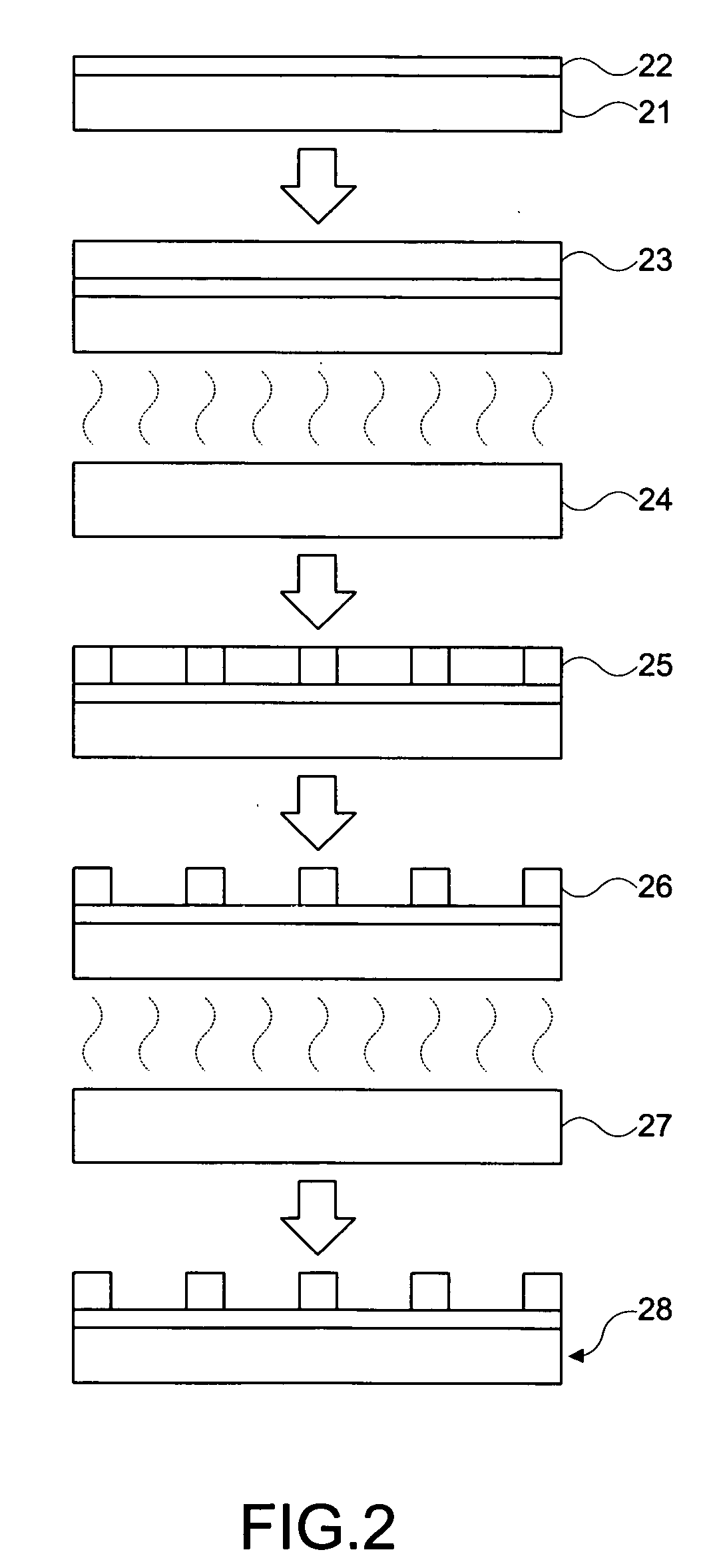Method of fabricating imprint lithography template
a template and imprint technology, applied in the field of template manufacturing, can solve the problems of line width distortion, high price tag, and limited use of uv-nil technology and hot imprint lithography to fabricate templates, and achieve the effect of improving the stability and hardness of hsq film
- Summary
- Abstract
- Description
- Claims
- Application Information
AI Technical Summary
Benefits of technology
Problems solved by technology
Method used
Image
Examples
Embodiment Construction
[0018]The following description of the preferred embodiment is provided to understand the features and the structures of the present invention.
[0019]Please refer to FIG. 1 which is a flow view showing a preferred embodiment according to the present invention. As shown in the figure, the present invention is a method of fabricating an imprint lithography term plate, comprising the following steps:
[0020](a) Substrate obtaining and cleaning 11: A substrate coated with a transparent electrode is obtained to be cIeaned with a chemical solution, where the substrate is made of glass or quartz; and the transparent electrode is made of indium tin oxide (ITO), indium zinc oxide (IZO), indium gallium zinc oxide (IGZO) or zinc oxide (ZnO).
[0021](b) Low-K material spin-on coating and pre-ba king 12: The substrate is spin-on coated with a low-k material to be pre-baked, where the low-k material is a spin-on glass (SOG), hydrogen silsesquioxane (HSQ), methylsilsesquioxane (MSQ), organosilicate gla...
PUM
 Login to View More
Login to View More Abstract
Description
Claims
Application Information
 Login to View More
Login to View More - R&D
- Intellectual Property
- Life Sciences
- Materials
- Tech Scout
- Unparalleled Data Quality
- Higher Quality Content
- 60% Fewer Hallucinations
Browse by: Latest US Patents, China's latest patents, Technical Efficacy Thesaurus, Application Domain, Technology Topic, Popular Technical Reports.
© 2025 PatSnap. All rights reserved.Legal|Privacy policy|Modern Slavery Act Transparency Statement|Sitemap|About US| Contact US: help@patsnap.com



